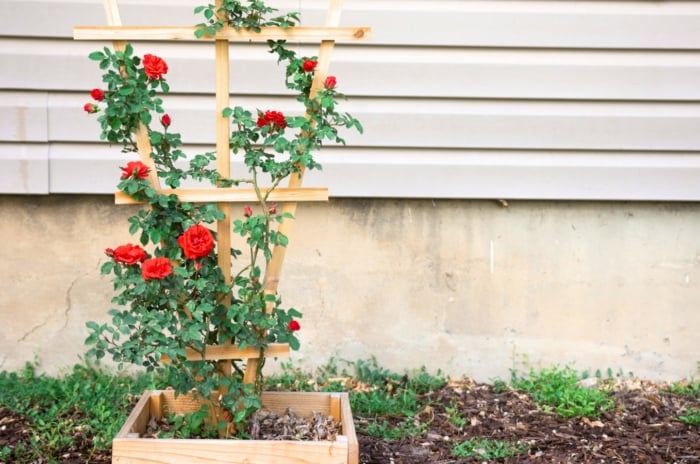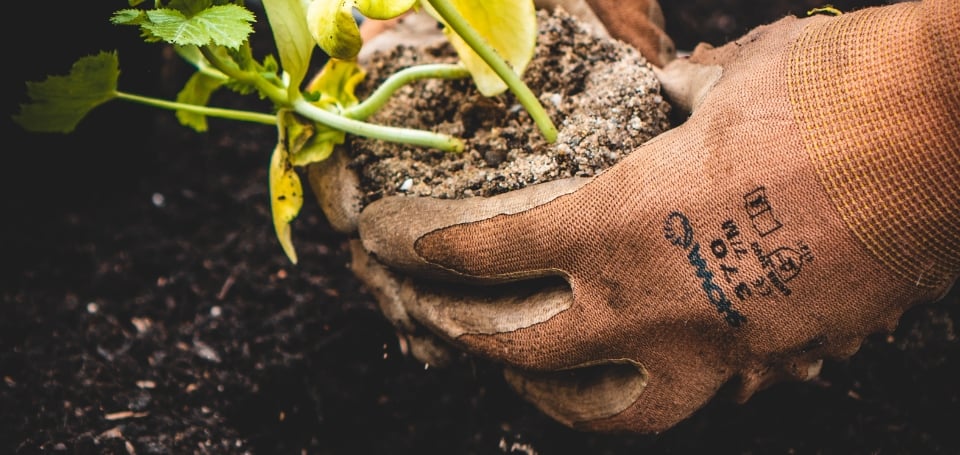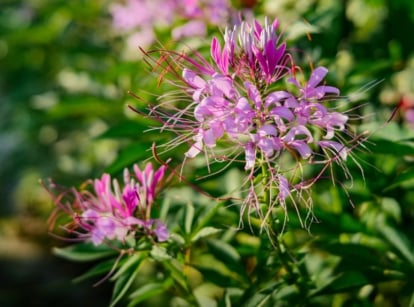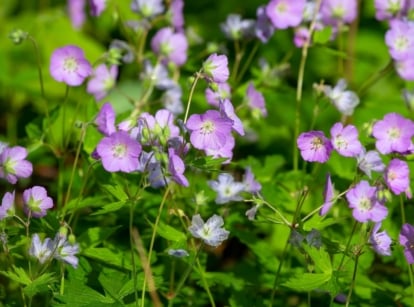How to Prune Knock Out Roses in 7 Easy Steps
Knockout roses are popular for their color, reliable reblooming, and easygoing nature. But even these low-maintenance beauties benefit from simple pruning for the best form and flowering. Garden expert Katherine Rowe reviews how and when to prune Knockout roses for a (nearly) effortless show.

Contents
Knock Out® roses are forgiving plants, built for regular wear and tear in the landscape without needing a lot of extra maintenance or resources. Durable, they’re bred to tolerate varying conditions from hot to cold climates, different soil compositions, and regular seasonal moisture. Despite their rugged constitution, the best cultural conditions ensure the healthiest, most floriferous shrubs. Part of their care continuum is proper pruning to keep them in shape, manage size, and remove whippy growth.
With the proper care, Knock Out® roses bring years of easy blooms. As vigorous shrub roses, they benefit from a hefty restorative cut each year for overall vigor. Trimming, too, helps preserve form and a bushy habit. Like all roses, they benefit from the removal of dead, diseased, damaged, and crossing canes any time of year.
With basic pruning guidelines, trimming knockouts becomes a streamlined routine task. They’re resilient, and a little practice makes perfect. Enjoy a long season of recurrent roses with a few easy cuts on schedule with the Knock Out® growth cycle.
Why Prune Knock Out® Roses

Pruning Knock Out® roses offers multiple benefits, whether a light trim or a heavier annual cutback. Without pruning, they grow large in their optimal conditions – which isn’t a bad thing – but show the best health and flowering with well-timed pruning.
Knock Out® pruning is a streamlined practice. It helps the shrubs by:
- Improving growth habit and a bushy form
- Preventing the spread of diseases
- Increasing air circulation among branches and foliage
- Encouraging new growth and buds
- Removing weak, dead, or declining growth
Prune at the Right Time

Late winter/early spring is the best time to prune Knock Out® roses more heavily. Prune this time of year for shaping, directing growth, and removing winter dieback. Heavier cutback as the shrubs break dormancy makes way for new growth and buds that emerge quickly with spring’s warming temperatures.
Prune Knock Outs® in late winter and early spring when new shoots begin to appear. Valentine’s Day is one of those old markers for the important garden task and a good time to start checking the canes, especially in warmer growing zones.
There are a few types of pruning when it comes to the reblooming roses. The first relates to the “three D’s,” or diseased, declining, and dead canes. Remove these any time to preserve overall health. Remove crossing canes, too, to avoid disease-susceptible injury. Cut out weak or spindly stems and suckering offshoots to open the interior for increased airflow and directing energy to the most vigorous stems.
Other pruning practices relate to heavier annual cuts for restoration as well as lighter trims to retain shape.
Annual Cutback

For the best sizing and vigor, cut Knock Outs® back by at least one-third to one-half every year before new growth emerges. A heavier cut this time of year, even down to 12-18 inches above the soil level, ensures the best flush of growth in spring.
A severe cutback to 12 inches tall promotes three-to-four foot shrubs as the season unfolds (they’ll triple in size).
Light Trims

If you miss the late winter/early spring pruning window or have wayward stems emerge, trim established roses lightly during the growing season. A light trim retains shape and form but reserves more drastic restorative reductions (more than one-third) for the cool, late dormancy period. Trim out smaller canes and any weak, spindly growth throughout the summer.
Hold off on trimming the healthy canes of new roses if they’re already in flower for the warm season. Young roses direct energy into developing roots and tender new stems and buds rather than flushing growth post-prune.
To prune diseased, declining, or dead canes, cut them back to the first healthy green stem portion. Dead canes will be brown and brittle, while healthy stems are green and pithy. Removing the “three D’s” as soon as you spot them helps prevent the spread of common diseases like black spot and powdery mildew.
Clean Tools

Roses are highly susceptible to bacteria, fungus, and viruses that spread easily on tools from stem to stem. Fortunately, Knock Out® roses are more resistant than other types, but they are still not immune. Pruning one plant with blackspot or other pathogen and moving to another specimen spreads the spores. While we talk about sanitizing tools as an important garden task, it really is when it comes to roses.
A simple alcohol wipe sanitizes the blades between uses. Or, a bottle of rubbing alcohol (70% or higher concentration of isopropyl alcohol) works as a quick dip or spray.
When it comes to tool selection, sharp bypass hand pruners are good for trimming thin or weak stems. Long-handled loppers are best for precise cuts on thick stems. For Knock Outs®, hedge shears are usually enough for the annual cutback. Make sure the blades are sharp for clean cuts that don’t tear or shred stem tissues, which can cause weakness and susceptibility to pests and diseases.
Make the Healthiest Cut

With sharp tools in hand, clip the canes at a 45-degree angle. Aim for ⅛ to ¼ inch above a bud or leaf node (where leaflets meet the stem). Angle the cut downward in the direction opposite the bud.
Cutting stems on an angle purportedly helps water run off the surface rather than collecting on the stem and bud, leading to potential diseases. New growth emerges in the direction of the bud as temperatures warm. This is beneficial for any cut when it comes to pruning roses, even in deadheading faded flowers.
Deadhead

Knock Outs® repeat flower until frost even without deadheading. But it tidies the plant’s appearance as blooms fade. To deadhead, clip the individual flower stems or cut the entire cluster of spent blooms down to the first leaflet.
The reliable rebloomers produce rosehips sparingly. To get the benefit of forage for songbirds and wildlife, let late blooms remain on the stem for hips in the fall.
Remove Debris

After pruning, deadheading, or trimming, make sure to dispose of debris away from the garden. Bag up and dispose of or burn debris rather than add it to the compost pile. This prevents diseases from spreading to other garden areas, particularly when it comes to black spot. But, the fungal disease is not often detrimental to the resistant Knock Out® line.
It’s also a best rose care practice to remove fallen leaves and blooms around the shrubs anytime of year. Removing the debris gets rid of diseased parts and prevents harboring the spores. It also minimizes damp conditions among unhealthy leaves at the soil level. Powdery mildew, a fungal problem that crops up in humid conditions, can affect Knock Outs®.
As roses go, the resilient Knock Out® is a sturdy, easy-care series. The landscape rose brings recurrent color with effortless style. Some essential pruning each year in spring and trimming as needed helps toward enhanced vigor.








